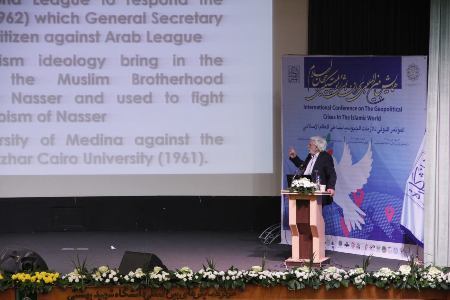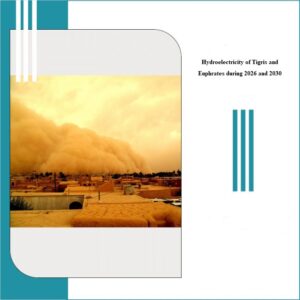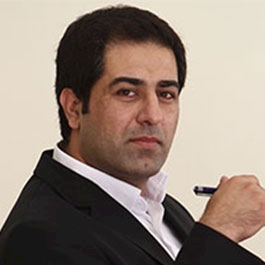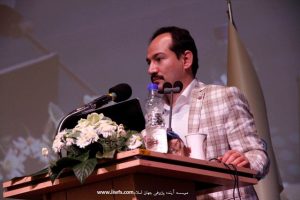« Doctor Saud and Mister Djihad, the religious diplomacy of Saudi Arabia »
The Saudis made up the largest contingents of foreign fighters against the Red Army in Afghanistan (5 000 members). Saudis comprised 15 out of 19 members among the terrorist group of the attacks of 9/11/2001 and 115 out of 611 prisoners of American jail in Guantánamo. Even now, the Saudis are the largest foreign contingent of the Islamic State (Daesh) in Syria and Iraq with more than 2,500 people. This attraction to armed jihad most likely due to the social structure and history of the Saudi regime.
After the first attack against the World Trade Center in February 1993, the White House decided to hit the Sudanese regime based on the pretext that there were 5 Sudanese among the 15 terrorists. However, after the attacks of September 11, 2001, they blamed … Iran, Iraq and North Korea and subsequently invaded Afghanistan and Iraq. There were neither Iranians, nor Iraqis or Afghanis, let alone North Koreans in the terrorist group.
This raises two questions:
– What about the appetite of Saudi citizens for the armed jihad? Where does it come from in the political, educational and social system of the kingdom?
– How does Saudi diplomacy manage to avoid the consequences of acts of its citizens?
Throughout the world, there are currently about 50 to 60 million Salafists, including 20 to 30 million in India, 5 to 6 million in Egypt, 27.5 million in Bangladesh and 1.6 million in Sudan. Elsewhere, the Salafists communities are smaller: about 10 000 individuals in Tunisia, 17 000 in Morocco, 7000 in Jordan, 17000 in France and 4000 to 5000 in Germany. According to the German intelligence service’s assessment, Salafism is the fastest growing Islamic movement in the world.
Is there a correlation between the Saudi religious diplomacy and the spread of Salafism? This is what we will try to analyze.
Wahhabism must be analyzed in terms of political ideas and international relations, not in terms of theology. There is a dialectic relation between the state diplomacy of the kingdom whose goal is mainly to protect and save the regime of Saud, and the religious diplomacy doomed to propagate Wahhabism. One must notice that Wahhabi authorities clearly called themselves as Salafism: one of the French Muslim theologians gave me a simple definition of wahhabism/salafism: “it is the most racist, anti-Semitic, misogynist, homophobic, sectarian practice of Islam”.
A religious diplomacy imbued in the DNA of the regime
The Saudi regime has been established on a double monarchical legitimacy: the first one is the family of Saud, and the other the Al Sheikh family (descendants of Abdul Wahhab). The leader of Al Sheikh family is usually the Great Mufty of Saudi Arabia.
This double diplomacy must reconcile the dynastic interests that leads very often to call for help from its Western protectors (the “Unbelievers”, the “Infidels”) in total contradiction with the objectives of the Wahhabi hierarchy that continually denounces the influence of “Unbelievers”, Jews, and Freemasons all over the world and especially in the Kingdom….
Each time the regime needs help from the “Unbelievers” to defend it
– in 1979 during the occupation of the Great Mosque in Mecca;
– during the Iran-Iraq war (1980 88);
– in 1991 to prevent Saddam Hussein from invading the country,
– and finally today to fight THE Islamic State in Syria and Iraq (DAESH)-
its diplomacy must be agreed upon by the Ulemas, doctors of Koranic faith, guarantors of the “respect” of the texts of the Qur’an and theological principles. The Ulemas clerics provide theological support to the King by twisting the Qur’an principles and employing a clever casuistry. They know that the interests of the two families are totally linked: one can’t abandon the other. But in return, the king must concede to his religious Ulemas an increasingly extended power to govern the Saudi society within the country. Additionally, in international matters the Ulemas are granted control over religious diplomacy, deciding who to help, how to manage major Islamist organizations, or host foreign students in its Islamic universities. The more the Ulemas’ support for the regime is clear and bold, the more they reap the benefits and advantages from the regime. The sovereign may promise to Westerners to limit financial aid paid to radical groups all over the world, but certainly not change the nature of its international proselytizing diplomacy always supported by unlimited financial windfall.
Religious diplomacy intended to spread Salafism is inscribed in the DNA of the regime.
It has always seemed unnecessary to Western diplomats to differentiate the Saudi regime – geopolitical dwarf and wealthy customer- from its religious diplomacy. Is this even possible? The radicalization rots today all major religions (American neo-evangelicalism with G W Bush’s cabinet; Radical Jews in the occupied territories of Palestine; Hinduism with the nationalist Bharatiya Janata Party (BJP) in India, and even violent Buddhism in Myanmar). However the originality of the Muslim Salafist radicalism is the constant and huge financial and ideological support by a country with immense resources and indisputable religious legitimacy (the King is the so called “Custodian of the holy places of Islam”). Saudi Arabia is not the first nor the only country to cultivate Islamic solidarity. Sudan of Hassan al-Turabi, which had created the international Organization for da’wa (preaching the Muslim to spread the message of Islam), was at one time qualified as a “terrorist Mecca”; Qatar, more recently, largely and so casually financed the Salafists; Khomeini’s Iran or Libya of Colonel Gaddafi managed Islamist groups in attacks in foreign countries as well.
Today, Turkey is playing its religious card in Central Asia and the Middle East among Turkish-speaking and more largely speaking Sunni groups. But few of these policies have benefited as constantly and with the huge financial means of Saudi Arabia since the birth of the kingdom as the Wahhabis. Since 1932, Wahhabis Ulemas call themselves Salafists and ask the king for the forced conversion of Shi’a subjects of the country. In 1956, King Faisal declared that Islam (Wahhabi doctrine) must be “at the center of the public diplomacy of the kingdom”.
The radicalization of Islam
The central question of contemporary Islam is to understand how Wahhabism/Salafism, denounced as a sectarian derivative by different religious authorities as soon as it was defined by Abd al Wahhab, and the constitution of the Saudi regime, could have become quasi Islam dominant.
What are the mechanics of this religious diplomacy? Saudi Arabia has implement over time an “ideological industry” which is a bastard child between the powerful methods of US “soft power” and the expert propaganda of the communist system. Religious diplomacy, supported at the highest state level, combines official diplomacy, public action and private foundations, determining who to help, punish, or exclude … By its diversity and complexity, the Saudi system is similar to the US system: personal action of Royal family and powerful and rich Saudi citizens, international organizations, financing and creation of free Koranic schools (madrassas) with free books and food for children and imams paid over the world, private foundations with immense means practicing exactly the same policy than the regime, “humanitarian” NGO, setting up scholarships to attract the best students of foreign madrassas to the Islamic universities of the kingdom, investment in media worldwide distribution ….
But the soft Saudi power is also an heir of the communist system with its totalitarian ideology (Wahhabism or Salafism is totalitarian excluding all other practices of Islam mainly Shi’as) and the body of his “political commissars” more than 25 000 to 30 000 alumni students of the Islamic University of Medina on the last thirty years, missionary of all origins, forced to return to their country to preach, sometimes being still employed by Riyadh. In USSR example, one would have called Medina University a “Lumumba University.” (the Lumumba University was the Soviet university of Moscow to train foreigners communists coming from all over the world)
The system has been set up in the 60’s, against the Arab nationalist regime of Nasser and pan-Arabism. The Cairo leader’s criticism deeply upset the monarchies of the Gulf.
To counter the Egyptian diplomacy, Riyadh designs The Muslim World League to respond the Arab League, the pan-Islamism ideology against pan-Arabism, and the University of Medina against the prestigious Al-Azhar Cairo University. The Muslim Brotherhood in Cairo persecuted by Nasser, found haven in Saudi Arabia and provide the country managers of the education system and administrations that it is missing … But after the defeat of Arab armies in 1973, the Nasser regime is declining.
The turning point of Saudi religious diplomacy was 1979:
– in February, the revolution in Teheran reopen the doors of history to Shi’as;
– in November, the most radicals Wahhabi (students of Great Mufti Ibn Baz) occupy the great Mosque of Mecca
– and in December Red Army occupied Afghanistan.
The regime finds a solution to export its salafist-djihadist.
How does the system work? The publication by WikiLeaks of more than 60,000 Saudi diplomatic documents give inside view of the interior of this very opaque system.
The Muslim World League (MWL), an NGO recognized by the UN, was the armed wing of religious diplomacy kingdom. It has adapted its strategy to local contexts: The League has implemented differentiated strategies in support of religious diplomacy of the country.
– First, in democracies accepting communitarianism like Britain, Canada and Belgium, MWL finance new Mosques and demands for local Muslims, an Islamic identity in the form of Islamic courts and religious schools (madrassas)
– in secular countries like France, the MWL denounce “discriminating” legislation or “Islamophobia”
– And in international life, Saudi regime, the most intolerant of the planet, play an active role in inter-religious dialogue by establishing the King Abdullah Bin Abdulaziz International Centre for Interreligious and Intercultural Dialogue, an NGO also included in the UN.
– In the Third World, the opening of madrasas in competition with public schools, installation of Islamic Courts, and the heading of local Muslim associations were the stages of growth of Salafism.
It’s a faceless diplomacy. Religious diplomacy of Saudi Arabia is mechanically supported by the political system, headed by a council close to the King, driven by a religious group on a global ambition, the Wahhabi ulema, and with a rigid ideology excluding all different kinds of Muslim practices (mainly Shi’s and Sufism) but always adaptable when it comes to the assistance of the regime. That’s why it has so rarely been studied as a system.
Yet it is clear from our estimates that Riyadhh spends as much money on its diplomatic religious action (between 5 and 8 billion $ per year) as it does for its arms purchases abroad in recent years.
Western diplomatic Silence
The speech of G W Bush in January 2002 (the “State of the Union” speech), accusing Iran, Iraq and North Korea as constituting the “Axis of Evil”, clearly forgetting Saudi Arabia, shows the diplomatic capability and influence of Riyadh among the USA’s rulers. Silence is similar elsewhere. Is obtaining big private contracts enough to explain Western blindness? Certainly, when Saudi Arabia was only a minor actor in international life. Still today, any development plan, as ridiculous as it is, continues to be hailed by some “experts” as a breakthrough reformism of the new rulers: for example in 2015 the election of a handful of women (between 11 and 20 of 6440 candidates) in municipal councils without real powers so far, was welcomed loudly by some foreign Observers.
But this blindness is no longer justified in the new international context. The debate about relationship with Saudi Arabia today is very harsh in the United States presidential campaign, but only just emerging in France for example.
Salafism and Wahhabism: the two faces of the same ideology
Above all, one must note the total similarity between Salafism and Wahhabism in terms of political ideas: bigotry against other practices of Sunni Islam; legal violence against the Shi’a, racism against “unbelievers” and “infidels”; anti-Semitism, obscurantism, anti-scientific conclusions (Freud’s psychoanalysis; Darwin’s evolution theory of evolution…), negation of human laws against the law of God, hatred of the “Other” whatever it is, misogyny, homophobia, intolerance, bigotry (not exhaustive list) and last but not least Plot Theory.
This conception of Islam is totalitarianism with religious basis. When Salafism does not publicly call for war, some experts qualified it “quietist Salafism.” In all forms of violent radicalization, there is always at the core, ideological radicalization. To think that a tolerable “quietist Salafism” could exist, is as naive as to think that Nazism could have a pacifist and tolerant form, or that there could be a “democratic communism”.
The anti-Shi’as obsession of the two ideologies is the same: the Salafists are more bloody locally perhaps, but the Wahhabis are planetary. Let’s think about this sentence that one of the French terrorist (Khaled Kelkal in 1992) delivered in an interview : “Shi’s has been invented by Jews to divide Islam”
The international community has limited its anti-terrorist diplomacy to identifying and blocking the funding sources of the Islamic state and terrorist groups, but this alone will not dry up their recruitment. Salafism taught in Saudi universities and Wahhabi madrasas all over the planet are the ideological engine which will continue to run even after the disappearance of the Islamic State.
The overview of state diplomacy shows that Riyadh may take all possible reversals necessary for the survival of the Al-Saud family. But on the contrary, the religious diplomacy is characterized by its rigid constancy and explains the spread of Salafism and flowering conversions or switching to jihadism.
It is difficult to imagine a religious diplomacy totally organized and coordinated as it was for example with Moscow diplomacy. It remains that the means employed, particularly financial, drawing a very effective global action long-term is destabilizing first for Muslim countries but also for Muslim communities in Western countries. The modes of action of Saudi diplomacy are different in the countries of the “first circle” (Pakistan, Yemen, Egypt …) in countries with strong Shi’as minorities (Bulgaria, India), in countries in crisis with Muslim minorities (Kosovo, Bosnia …); in the countries of sub-Saharan Africa (Mali, Niger …); in the former countries of the USSR, but also in Western countries. The anti-Shi’s line looks like an obsession. The few regional analysis I am analyzing in my book, are just made to demonstrate the global ambition of the religious diplomacy of Saudi Arabia.
Completeness is impossible for a single researcher, as the material of 60,000 diplomatic documents released by Wikileaks is rich. Only a team of specialists from each of the regional areas could build a complete synthesis of the Saudi worldwide system.
The current crisis
Has the time of contradictions finally arrived? The various crises that strike or hit the Arab-Muslim world in recent decades have changed the balance of power and the Syria-Iraq crisis has not brought all its effects.
The fracture began during the Gulf War (1991), when the high hierarchy of the Muslim Brotherhood defends Saddam Hussein against the arrival of US Armed forces. Saudi Arabia has deported a lot of former protected brotherhood members. Even a part of official religious hierarchy expresses criticism against the King (the Sa’hwa) but quite soon it came back home.
Divorce has grown with Arab Revolutions (2012), which brought to power almost most of the Muslim Brotherhood leaders. That’s why Riyadh supports the military regime in Egypt.
Today the Wahhabi regime is challenged not only by the Muslim Brotherhood but also by the jihadist Salafists and the Islamic State which it has largely contributed to the birth. This is the story of Dr. Frankenstein visited by the monster he created. Daesh proclaiming the Caliphate and implementing a Sunni state, massacring Shi’as, claiming itself today the genuine defender of the Sunnis in Iraq and Syria, is thus challenging the role of the Saud dynasty which wants to be the leader of the Sunni world but can’t claim to descend from the prophet’s tribe. The Saudi regime has unleashed the war in Yemen leaving the Westerns forces to fight alone against Daesh. Riyadh Is not fighting against Daesh but it is competing with Daesh.
Finally today, even the Sunni world challenged the Wahhabi diplomacy as shown during the Grozny Islamic Congress in September 2016 with the participation of the rector of the university Al Azhar. The Congress qualified Wahhabism as a “sect” and “not part of Sunnism”.
CONCLUSION
My book is the only synthesis available on Religious diplomacy of Saudi Arabia since the birth of the kingdom. The study of religious diplomacy of Saudi Arabia must become a major topic of concern to all democratic regimes. In France, attacks by Salafists (300 deaths and over 800 injured in 18 months) showed the insider danger. The critical work in English on the Saudi’s risk (academic work, congressional reports, the work of NGOs, associations defending religious freedom, journalists …) are quite numerous but not synthetic. Nothing comes out in France, nothing of Parliament, few NGO reports. Some denunciations from former diplomats were carefully arranged on the shelves where the troublesome studies are covered with dust. With rare exceptions, universities have been very careful on this very subject for various reasons ranging from difficulty in finding sources to the fear of being denied their visas and lose access to their study site.
The two Arabic-speaking specialists who have worked on this book have also preferred anonymity. Similarly interviews conducted in France, Switzerland, the Middle East and Central Asia with imams, Muslim Brotherhood members, chairmen of mosque associations or managers responsible for MWL, remain anonymous to the general demands of my interlocutors.
Pierre CONESA
PARIS NOVEMBER The 9th;





